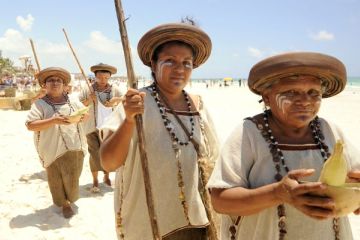
Old women from the village pay tribute to Ixchel / Photo: Karen Leperi
THE SMELL OF COPAL incense hangs heavily in the hot, humid air of the Riviera Maya, as paddlers prepare themselves for a ceremonial pilgrimage to visit the sanctuary of the goddess Ixchel on Cozumel.


